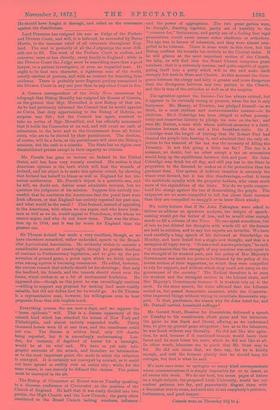The Bishop of Gloucester at Bristol was on Tuesday speaking
to a diocesan conference at Cirencester on the position of the Church of England. He held that it was really divided into two parties, the High Church and the Low Church; the party often mentioned as the Broad Church lacking numbers, influence, and the power of aggregation. The two great parties were, he thought, drawing together, partly out of hostility to the "common foe," Socinianism, and partly out of a feeling that legal prosecutions would never ensure either obedience or orthodoxy. The age was in favour of toleration, and they were almost com- pelled to be tolerant. There is some truth in this view, but the Bishop confines his remarks too entirely to the Clerical order. If he will glance at the most important section of the Church, the laity, he will find that the Broad Church comprises great numbers ; that it is extremely zealous, and quite capable of aggre- gating itself into a party which will in the end make itself strongly felt both in State and Church. At this moment the diver- gence between the clergy and laity is greater and more dangerous than the divergence between any two parties in the Church, and this is true of the orthodox as well as of the sceptics.


































 Previous page
Previous page